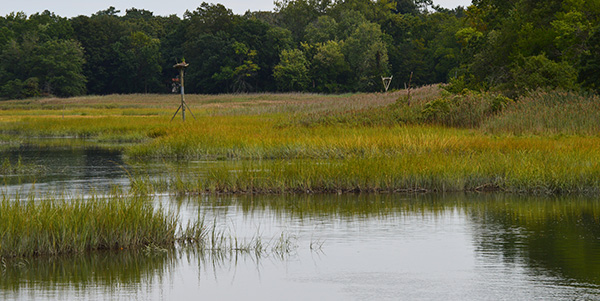
It may be true that “all politics is local.” It’s also true that elections for local office don’t get the headlines or the hype.
Las Vegas sportsbooks don’t offer betting lines on the race for City Clerk in Milford the way they’ve been laying odds on the 2024 Presidential election pretty much since the last one ended. Many candidates’ names may not be recognizable even to anyone paying casual attention. Still, local leadership matters, especially when it comes to environmental decisions that will affect your community.
That’s why Tuesday, Nov. 7, 2023 is as important a day to go to the polls as any higher-profile Election Day.
Just ask the 1.1+ million registered voters on the eastern half of Long Island, who won’t be voting this Tuesday on the Suffolk County Water Quality Restoration Act. Though there is federal funding available through the Bipartisan Infrastructure Act to replace and upgrade the County’s 380,000 failing septic systems, and the New York State budget included language that allowed the County Legislature to decide whether to give its constituents a chance to vote on their clean water future, there is nothing on the ballot. The Suffolk County Legislature didn’t even hold a vote on whether residents should be allowed to vote on the matter. They’ve continued to keep open the resolutions that would have added this essential measure to the ballot, derailing this local issue at the county level.
Every seat on the Suffolk County Legislature is on the ballot this year. Same for Nassau and Westchester Counties. As are all 51 spots on the New York City Council. Suffolk County will pick a new County Executive, while Town Supervisors will be elected in Mamaroneck and Rye Town and in nine townships on Long Island, from North Hempstead in western Nassau County to Southold on the North Fork.
In Connecticut, voters in three of the state’s four largest cities – Bridgeport, New Haven, and Hartford – will elect a mayor. Voters elsewhere will determine races for Boards of Education and Boards of Finance, everything from Boards of Assessment Appeals to Zoning Boards. These are the races that determine whether our communities invest in clean water infrastructure, whether our kids learn about climate change in school, and what will be done with the forested lot at the edge of town.
Across the Long Island Sound region, these are the races that occur closest to home. And historically speaking, they’re the elections with the shortest lines at polling places. They’re called off-year elections for a reason.
In Queens County, 794,498 votes were cast in 2020 – more than any other county in New York State. The following year, in an off-year election, barely more than 287,000 votes were cast (even though a state constitutional amendment, the Right to Clean Air, Clean Water, and a Healthful Environment, was on the ballot.) The 2022 election was a mid-term, and New Yorkers came out in part to vote for the $4.2 billion Environmental Bond Act; 442,000+ of those votes were cast in Queens.
There is no galvanizing ballot measure anywhere to drive up participation this year. Proposition 2 in New York calls for “extending sewage project debt exclusion from debt limit,” an amendment originally passed in 1963 and every 10 years since. Not much of an emotional needle-mover, and too much of a mouthful to be effective as get-out-the-vote motivation, but that doesn’t mean it’s not important.
There is no statewide ballot measure in Connecticut. In New Haven, though, voters will weigh in on a special ballot question about whether to move city departments from charter to ordinance, which could affect the administration of the Parks Department. But no car bumper big enough exists for the sticker that could explain the nuances of this proposed revision.
Actually, that example may explain why turnout is lowest for local elections. Smaller races require more homework. It’s harder to become an informed electorate when information is scarce, especially with the decline of local media outlets focused on local governance. It’s up to each of us to learn about ballot measure arcana, to conduct our own research into an incumbent’s environmental policies or a new candidate’s environmental promises on the campaign trail.
When fewer votes are cast, every vote counts more. Make sure you cast that vote in a way that you believe benefits your village, your town, your county, and your environment. The outcome of the elections on Tuesday will shape decisions that are made in your community for years to come.
